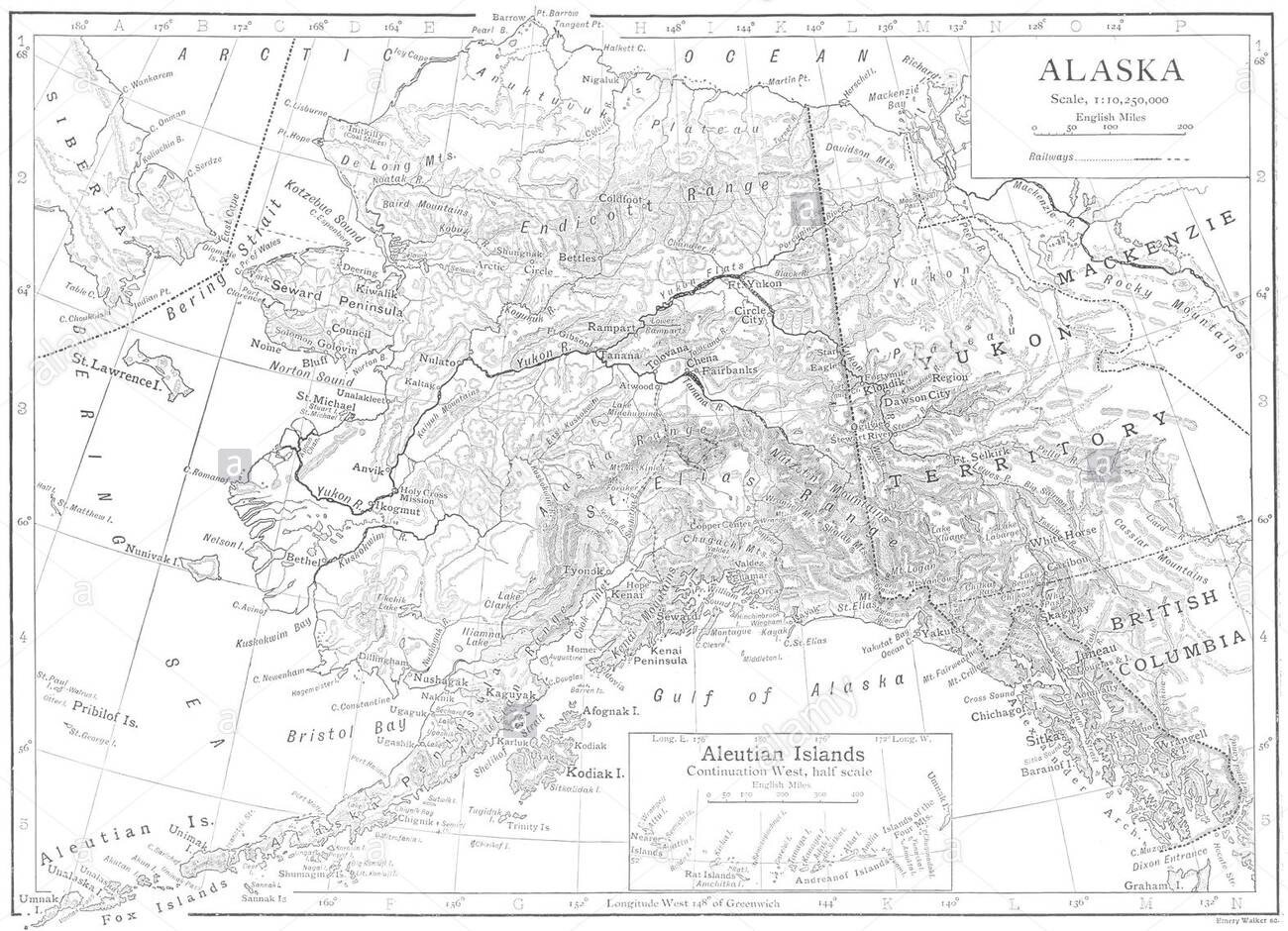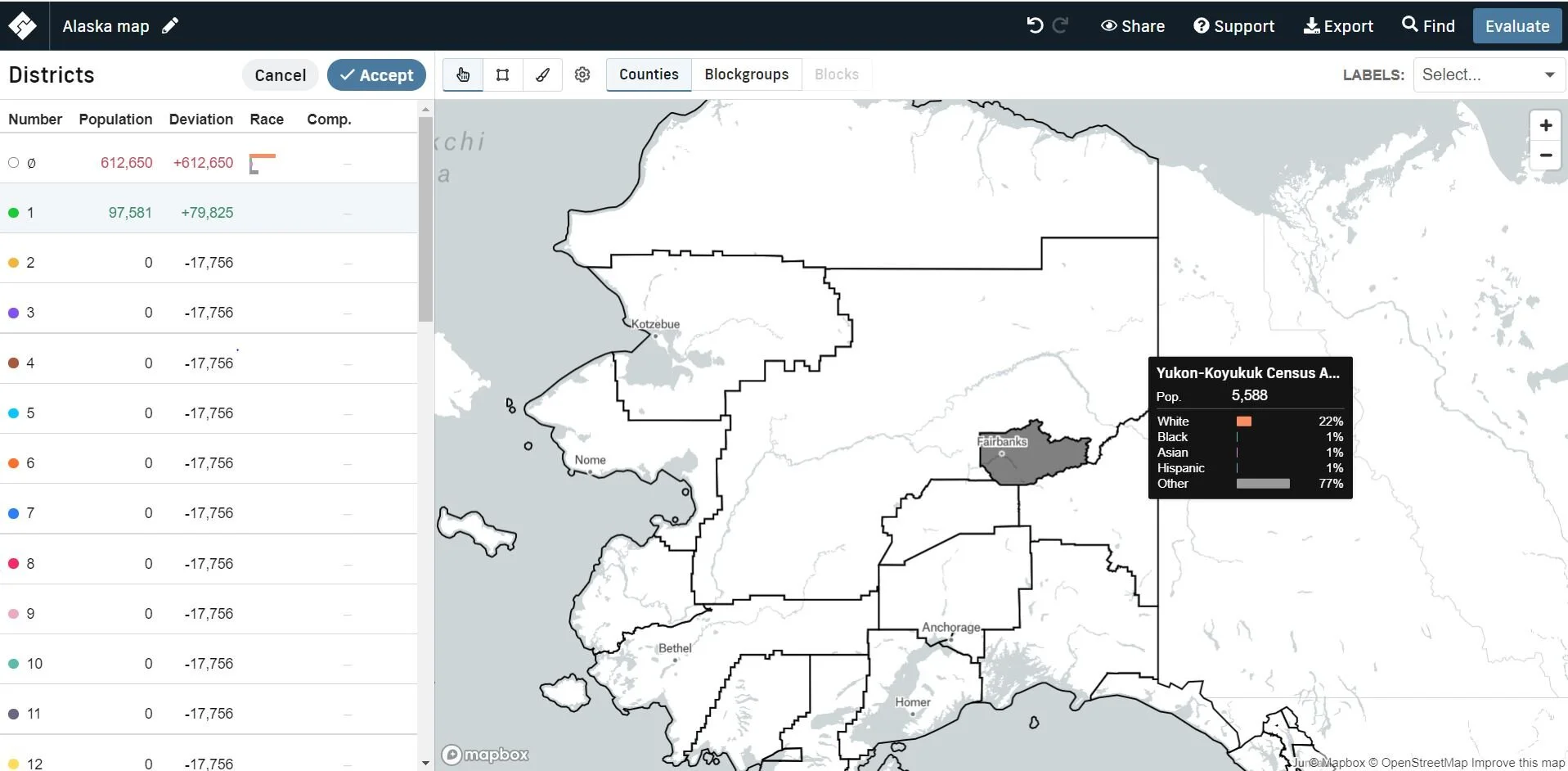
Redistricting 101
What is Redistricting?
Redistricting is the constitutionally chartered process through which Alaska’s legislative district boundaries are redrawn in accordance with population changes reported by the U.S. Census. Every 10 years, when the census data is released to the public a ninety-day cycle is triggered wherein the state’s Redistricting Board must draft new maps, take public input, and adopt a finalized redistricting plan.
In 1998, Alaska voters approved Ballot Measure 3 to amend Alaska’s constitution and redefine the redistricting process in Alaska. The Ballot Measure added new constitutional language to designate the line-drawing authority to an independent Redistricting Board, whose members were prohibited from seeking legislative office in the election following adoption of a new redistricting plan.
The Redistricting Board is comprised of five members appointed by all three branches of state government. Two board members are appointed by the Governor and the three other board members are appointed by the presiding officer of the senate, the presiding officer of the house of representatives, and the chief justice of the supreme court, respectively.
Constitutional and Statutory Provisions:
Article VI enacts the redistricting process in Alaska and spells out the creation and operations of the Redistricting Board and Alaska Statutes Title 15 contains several provisions which apply to the Redistricting Board.
Alaska’s Current Legislative Districts
On November 18, 2013 the Alaska Superior Court approved the July 14, 2013 Proclamation Plan for the state’s house and senate districts. In accordance with the Alaska Constitution, Alaska’s bi-cameral legislative government is made up of 20 Senate Districts and 40 House Districts.


